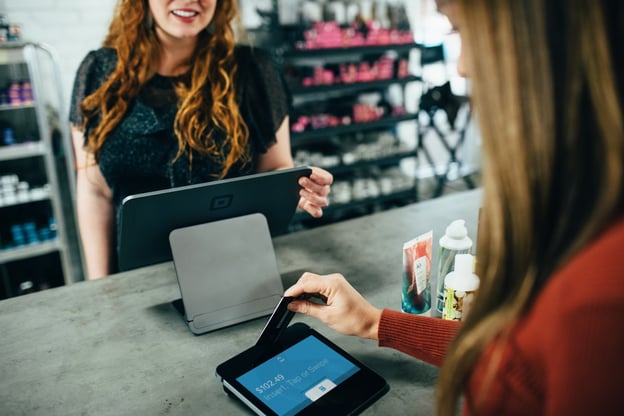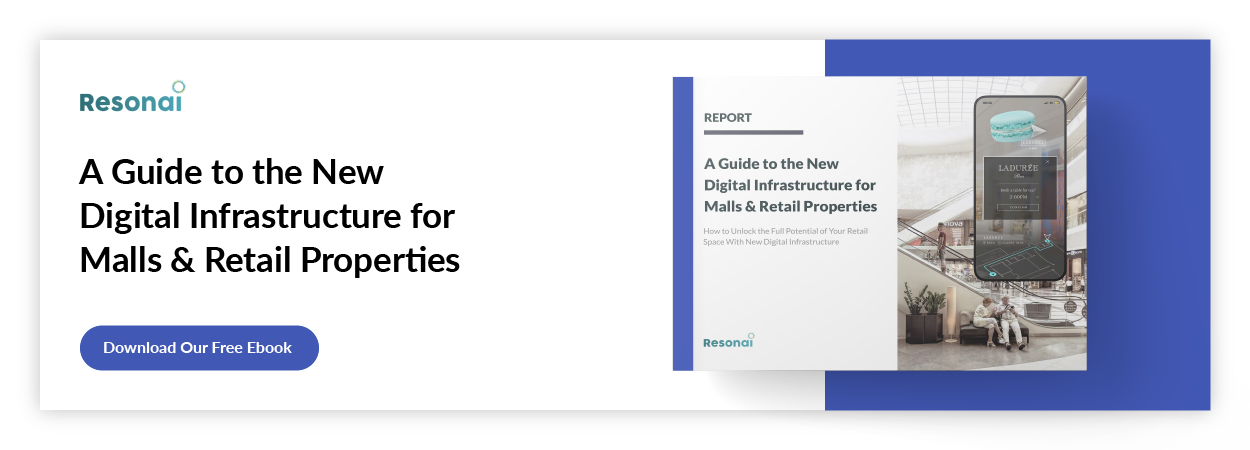Point of Sale Data: How Transactional Analysis Drives Retail Success
By analyzing point of sale data, retailers can uncover many hidden insights about their customers, marketing campaigns, and staff

When retail analysts want to study the buyer’s journey, one of the best places to start is at the point of sale. It is the universal checkpoint where retailers can review what customers buy, when they purchase, whether they use promotional discounts, and many other vital insights.
On average, over 60% of retail brands actively use point of sale data to analyze performance. The only question is what data points are the most useful for optimizing sales and marketing efforts.
Let’s take a closer look at the insights retailers can gain by analyzing point of sale data.
Want to learn more about how retail analytics impact your world? Check out our article, "Retail Analytics: The Ultimate Guide"
Jump to a section
What is point of sale data?
Point of sale data is the information retailers collect each time a customer completes a transaction. These datasets are usually quite broad, including everything from items purchased to any number of demographic data points that might enrich a customer profiel. Most retailers use a point of sale system to unify disparate data sources — such as checkout registers, handheld mobile scanners, and ecommerce platforms — into a form that is easier to manage and aggregate with other sources.
Point of sale data is one of the foundations of modern retail analysis. It is the one moment where every customer — from the impulse buyer to the cautious shopper — commits themselves to a purchase. It represents innumerable insights that validate your business strategy or suggest that something went wrong earlier in the buyer’s journey. By understanding their customers at the point of sale, retailers can guide the rest of their market to checkout more effectively.
Back to topPoint of sale data types
There are many opportunities for point of sale data collection, even within a single transaction. As retailers leverage digital payment systems, it’s easier to draw on information from loyalty programs, promotional coupons, and purchase histories to uncover hidden trends.
To best understand the depth of available information, it can help to break apart point of sale data into each of its component parts. For our purposes, we’ll focus on examples from brick and mortar retail storefronts, but these options may vary depending on your business model or sales channels.
Sales
Sales data is the financial statistics associated with transactions. In its most useful form, retailers aggregate these records to project revenue, calculate net profits, and generally manage their operational bottom line. Sales data is valuable at both the micro and macro levels — for example, it’s just as important to understand the average order value or items per purchase as it is to calculate a brand’s total daily revenue.
Back to topProduct
Product data refers to the characteristics of purchased items. This should not be confused with a product’s popularity — rather, it is a measurement of traits that drive sales. For example, in a bookstore, a point of sale data analysis would compare purchases of hardcover and softcover books. In a grocery store, retailers might learn whether soft drink six-packs sell faster than twelve-packs. These considerations help stores optimize their display shelves to maximize revenue and optimize promotional strategies for slower-moving products.
Back to topInventory
When retailers integrate point of sale systems with inventory management platforms, they can automatically adjust inventory volumes the moment a transaction occurs. This creates beneficial opportunities for customers and employees alike. Customers can review local inventory in advance to see if items are in stock, while retailers can automatically account for each sale and return.
When these processes are integrated with positional tracking systems, storefronts will find another benefit — the ability to find any product within the facility quickly. Employees can look up SKU information to determine where products are located, whether on a display shelf or in a customer’s literal cart. This information reduces the time employees will spend finding and reshelving misplaced items while ensuring customers find their items faster.
Back to topCustomer
The ideal customers aren’t the ones who complete large purchases — it’s those who make repeat purchases. Retailers should always seek out opportunities to bring existing shoppers back to the store, driving loyalty and long-term revenue in the process. When it comes to point of sale techniques, loyalty programs and memberships are excellent tools for gaining insight into regular customers.
For retailers, loyalty programs are an opportunity to collect and unify customer analytics data under a single user ID. This information is invaluable for its ability to provide fresh insight into recurring behaviors — such as frequently-purchased products, average order value, and more. With the right retail analytics tools, retailers can then calculate the lifetime value of frequent shoppers and predict the estimated value of new customers with similar behaviors.
Back to topStaff
Customers aren’t the only people involved in a transaction. We can now analyze employee performance by associating their performance with a staff ID. For retailers who offer commissions, this makes it far easier to keep track of each team member’s contributions while identifying core strengths, such as upselling or transactional efficiency.
Back to topPromotions
Marketing and promotional campaigns are major drivers of retail sales, but historically, it’s been difficult to track their impact. Thankfully, digital point of sale systems make it far easier to connect individual shoppers to specific promotions. For example, retailers can link campaigns with specific coupons and discount codes to track how frequently customers use them. These systems can even track store-wide discounts more effectively by analyzing trends before and after the launch of a promotion.
Back to topHow Vera Can Help
Checkout counters sit at the center of retail data analysis. The insights gained at the point of sale reflect the success of every promotional display, marketing campaign, and customer service interaction. That’s why it’s so important to understand how checkouts link back to operations throughout a storefront.
We can help. Vera is our comprehensive computer vision platform that empowers retailers to control how physical spaces are navigated, experienced, maintained, and monetized. Through the power of our proprietary spatial computer and intelligent digital twin technology, Vera converts physical buildings into digital assets with the infrastructure to measure, analyze, and enhance shopper engagement. Combined with Vera’s integrated support for real-time data analytics and context-aware augmented reality, retailers can build systems that develop detailed customer profiles, deliver personalized shopping experiences, and unlock new revenue opportunities through digital advertising.
Are you ready to learn more? Get in touch with Resonai today and set up a free demonstration.
Subscribe to Our Newsletter!
Read More
Retail Analytics: The Ultimate Guide
Every modern retail business — from boutique shops to sprawling supermarkets — thrives on data. As...
Predictive Analytics for Retail Stores: How to Forecast Success
Brick & mortar retail has been the backbone of global consumer commerce for decades. Even as...
The 8 Best Retail Analytics Companies For Modern Vendors
Digital stores thrive on analytics: tracking where visitors come from, how long they spend on each...
